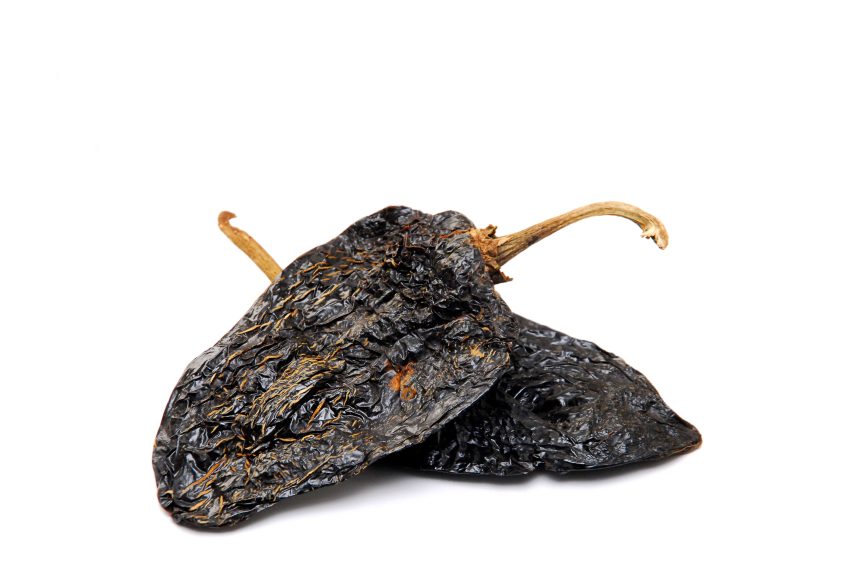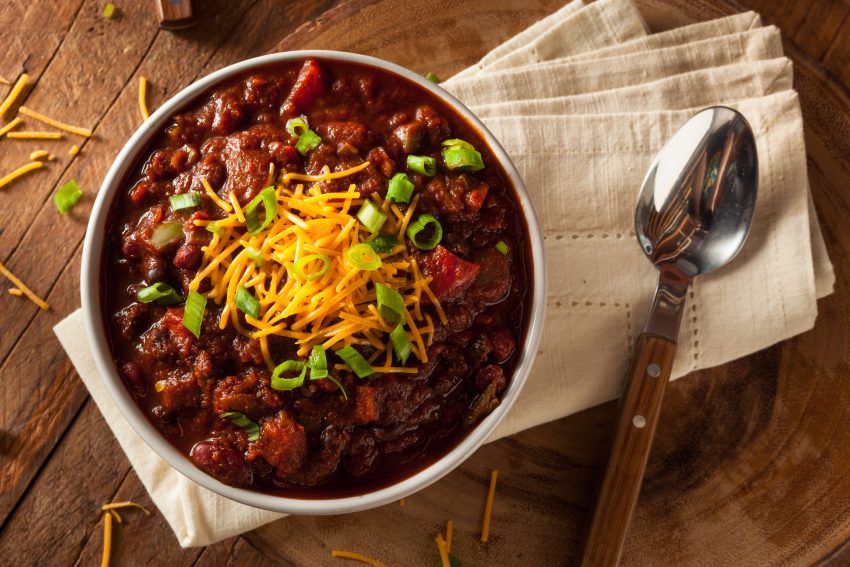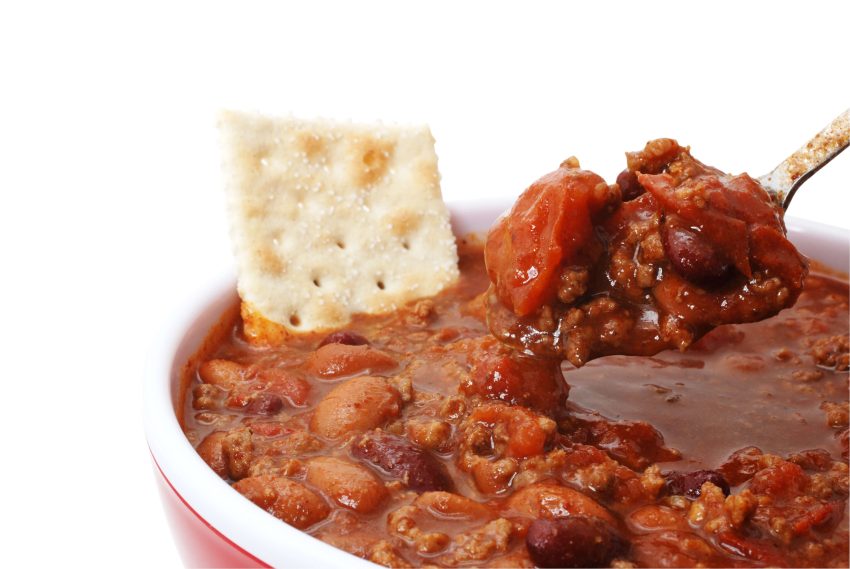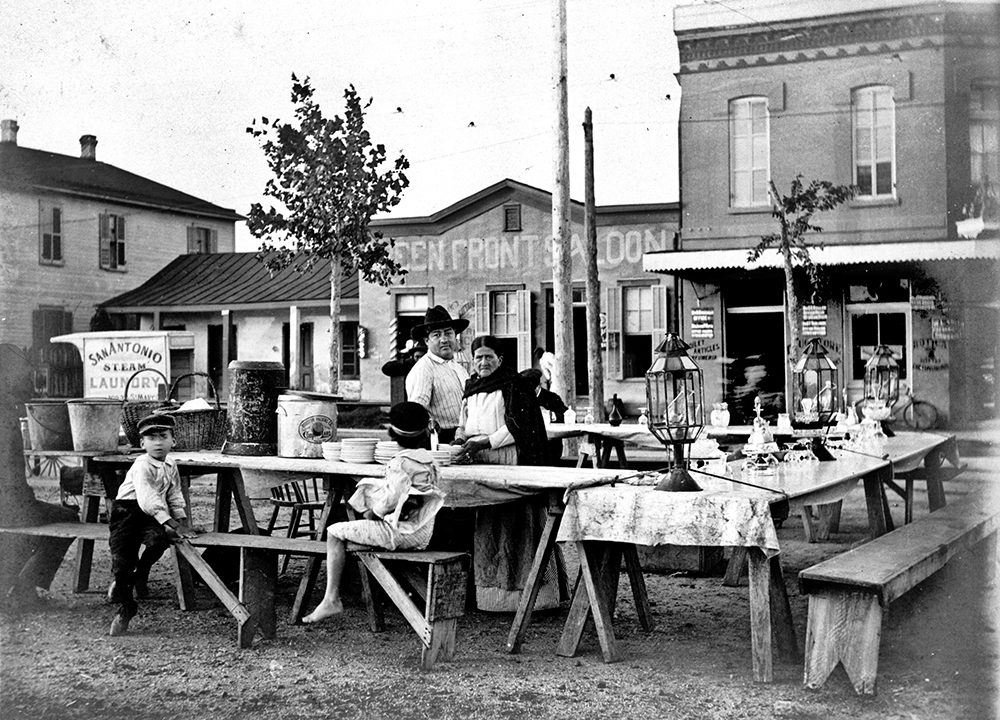( Above: A chili queen and her family prepare their stand on a San Antonio square. UTSA Libraries Special Collections)
What’s the real story behind our iconic state dish? The debate over what truly belongs in a bowl of Texas chili may never be settled, but its rich history is filled with fascinating stories. Chili’s evolution is as complex and layered as the dish itself: a blend of cultural fusion, entrepreneurial ingenuity, necessity, and a passion for great flavor.

The ingredients in a bowl of chili are as much a cultural artifact as they are a culinary tradition. Chili powder typically comes from dried, ground ancho chilies, a staple in Mexican cuisine. Tomatoes, from Central and South America, make up the sauce base. Beef was introduced to the Americas by the Spanish in the 1500s, along with onion, garlic, and cumin (comino) — originally from Asia and carried through Africa before reaching the Americas.
In San Antonio in the late 1800s and early 1900s, enterprising Latinas supported their families by setting up food stands in the plazas, selling a variety of local dishes. These women became known as San Antonio’s “Chili Queens,” feeding hungry customers with a variety of Mexican dishes, including their version of chile con carne—chilies with meat. Chef Robert Cantu of San Antonio’s Omni La Mansion del Rio hotel points to chile con carne as the likely origin of Texas chili.
“We feature our chili on the menu as ‘San Antonio Chili Queens Chili,’” said Cantu. “Our rendition aims to modernize the traditional method, bringing a dish with a 150-year history up to today’s culinary standards. I hope our guests order it to experience a true representation of Texas terroir and history.”
One of the longest-standing debates about Texas chili centers around one simple question: beans or no beans? Both sides are firm in their stance, but the truth might lie somewhere in between. Cantu and food historian Monica Perales, associate vice provost at ITC, agree that beans were likely used as a way to stretch a dish when meat was scarce or expensive. The resourceful Chili Queens may have popularized adding beans, either as a made-to-order request due to cooking time or by combining beans left over in one pot with chile con carne in another.
Willie Gebhardt, a German immigrant to New Braunfels, developed a love for Mexican flavors and opened his café in 1892, serving a variety of Mexican dishes. When he realized fresh chilies were seasonal, Gebhardt set out to find a way to make his beloved chili available year-round. He created a method for drying ancho chilies and pulverizing them into what he coined “Tampico Dust.” Gebhardt distributed pamphlets with recipes to promote his new product, helping more people recreate Mexican flavors at home.
Chili and other Mexican di shes gained broader recognition at the 1893 World’s Fair in Chicago, the “World’s Columbian Exposition.” The fair, which introduced the world to Wrigley’s chewing gum, Cracker Jack popcorn, and Pabst Blue Ribbon beer, also featured a chili stand from San Antonio. That small taste of Mexican food sparked the interest of journalists and travel writers eager to explore the state’s distinctive flavors.
shes gained broader recognition at the 1893 World’s Fair in Chicago, the “World’s Columbian Exposition.” The fair, which introduced the world to Wrigley’s chewing gum, Cracker Jack popcorn, and Pabst Blue Ribbon beer, also featured a chili stand from San Antonio. That small taste of Mexican food sparked the interest of journalists and travel writers eager to explore the state’s distinctive flavors.
Another popular discussion on chili surrounds what should accompany the dish. Corn tortillas were probably the go-to option in San Antonio, though Cantu believes cornbread was likely and may reflect the many cultural influences in the region. Cornbread, a “quick bread” made without yeast, bakes easily in a cast-iron skillet or Dutch oven over an open fire, and would have aligned with the Chili Queens’ cooking techniques. “Pan de Campo” (camp bread or cowboy bread), a quick bread resembling a flattened biscuit, is another possibility, as it was made in a similar fashion.

Perales suggests saltine crackers were a likely match, as they were popularized in the early 1800s. They had a long shelf life and were easy to produce. Perales cited the Chili Appreciation Society International’s Unofficial History of Texas Chili, documenting Lyman T. Davis serving his version of chili with crackers in Corsicana in the 1920s. C. E. Doolin’s Fritos corn chips would come onto the scene in 1932, and Ignacio “Nacho” Anaya’s fried tortilla chips began to catch on in 1943 (when he served them covered in cheese and jalapenos).
“There is a fascinating and multilayered history that can be found in a seemingly simple bowl of Texas chili,” said Perales. “It takes ingredients from all over the world to put a bowl of chili together. We all find our own variations, with ingredients, garnishes and serving styles reflecting family traditions. In so many ways, chili reflects the many cultural influences that have shaped Texas.”
Although there are countless ways to enjoy a bowl of chili, one thing is clear: Texas chili reflects the diverse cultures, inventive spirit, and practical needs of the people who created it. From the chili stands of San Antonio’s Chili Queens to Gebhardt’s pioneering chili powder, this dish has transformed into a symbol of Texas itself, officially designated as the state dish in 1977. Bold, flavorful, and unapologetically unique, chili remains a cherished comfort food that bridges the past and present—providing a taste of history in every bowl.
Explore further
UTSA Libraries Special Collections – Mexican Cookbook Collection
UTSA Libraries Special Collections – Gebhardt Mexican Foods Company Collection
